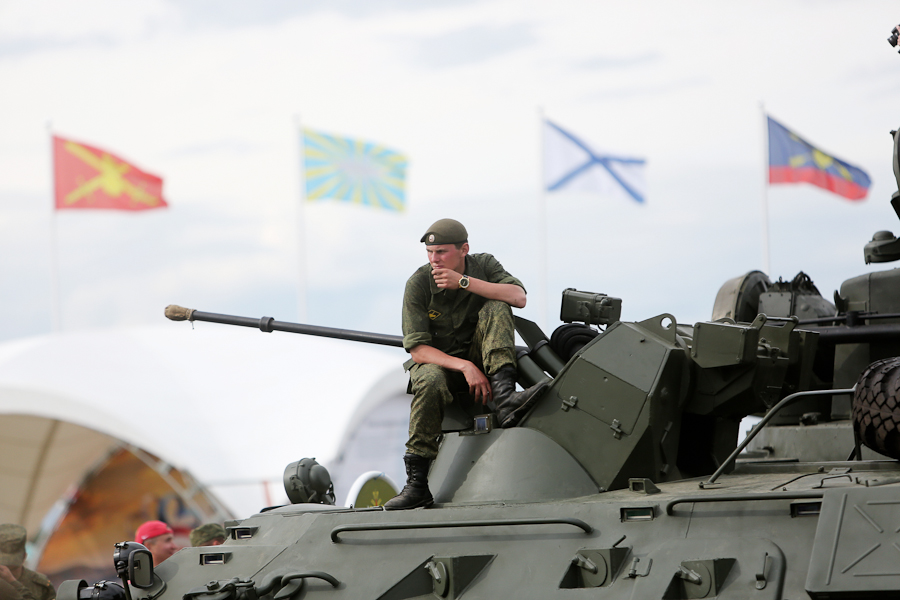Russian forces pay deadly price for rushed October offensive in Ukraine
Close-range encounters, occurring with alarming frequency across the 700-mile front, reveal how hasty planning and poor leadership are exposing Russian troops to extreme risk.


Although Russian forces are keeping up the ante with their offensive operations against Ukraine, casualties are legion as October of this year proved to be one of the most deadliest months for the Russian Armed Forces.
As reported by Forbes, Russia senses Ukraine’s deepening manpower shortage and is anticipating the coming winter, as Russian forces attacked all along the front line in early October. The objective: to take as much Ukrainian territory before worsening weather makes cross-country assaults more difficult for the attackers.
The news outlet notes that the Russian Armed Forces are in a hurry, and impatiently hurling masses of minimally trained troops into hasty and disorganized attacks.
Russian forces barreling headlong into Ukrainian troops
The outlet cites an incident that happened with the Russian marines from the 810th Naval Infantry Brigade on 15 October. The Russian marines counterattacked the eastern edge of the 270-mile salient that Ukrainian troops carved out of western Russia’s Kursk Oblast starting in early August.
Barreling headlong into the Ukrainian army—the 61st Mechanized Brigade and 17th Tank Brigade, apparently—the Russian marines met a wall of steel and explosives. One Russian BTR-82 wheeled APC (armored personnel carrier) rolled right up to a Ukrainian T-64 tank. The tank opened fire with its 125-millimeter cannon from tens of feet away, striking the BTR.
Dazed and wounded Russians stumbled out of the damaged and smoking BTR, right before a second Ukrainian tank put another 125-millimeter round into the vehicle.
Two days later, Ukrainian troops discovered one of the BTR’s passengers lying nearby, half-dead.
“Honestly, I was so relieved,” the 19-year-old Russian soldier said from his hospital bed, presumably somewhere in Ukraine.
The Russian soldier recalled the skirmish that nearly killed him. “We were on a BTR, then boom,” he said. “I couldn’t see anything. I thought I lost my leg. It was cut off later. Somehow I escaped the BTR.”
Recurring pattern of extreme risk
That the BTR’s crew failed to notice the Ukrainian tanks—or recognize them as Ukrainian, at least—wasn’t just bad luck on the part of the crew. It’s part of a trend across the 700-mile front line of Russia’s 32-month wider war on Ukraine.
In mid-October, Ukrainian tanks scored point-blank hits on attacking Russian vehicles on both sides of the Kursk salient, outside Kurakhove in eastern Ukraine and in Zaporizhzhia Oblast in southern Ukraine.
Rushed planning and disinterested leadership expose Russian soldiers to extreme risk. When a Russian APC rolls right up to a Ukrainian tank, it’s not necessarily the crew’s fault—even when the crew is poorly trained.
Forbes speculates that ”maybe they’d been told they’d meet up with friendly forces, and mistook the Ukrainian vehicles for those allies. Maybe their commanders had assured them that any nearby Ukrainian tanks had been knocked out by pre-attack bombardment.”
In any event, Russian losses have spiked as the October attacks have escalated. The Russians lost nearly 1,700 troops killed and wounded along with more than 100 vehicles in 24 hours ending on Monday 28 October, according to the Ukrainian general staff in Kyiv.
The Kremlin has made good some of its losses by increasing bonus payments to new enlistees. But it’s also counting on thousands of North Korean troops to reinforce battered front-line units. The first of those North Koreans trucked into the Kursk Oblast over the weekend and apparently joined the survivors of the ill-fated 810th Naval Infantry Brigade.
But as dire as Russia’s manpower problems are, Ukraine also has problems of its own. After holding out in the eastern fortress town of Vuhledar for two years without significant reinforcement, the Ukrainian army’s 72nd Mechanized Brigade was down to a fraction of its original strength. One 350-person battalion reportedly had just 30 active troops when the brigade finally retreated from Vuhledar on 1 October.
Related:
- Zelenskyy: Russia lost 650 thousand killed and wounded in war
- General Staff: Russian losses exceed 450,000 troops
- British Intel: Russia faces highest average daily personnel losses in February since start of war
- Zelenskyy: 31,000 Ukrainian troops killed vs 180,000 Russian losses in war
- “Army of Drones” UAVs hit record 335 Russian strongpoints in one week


